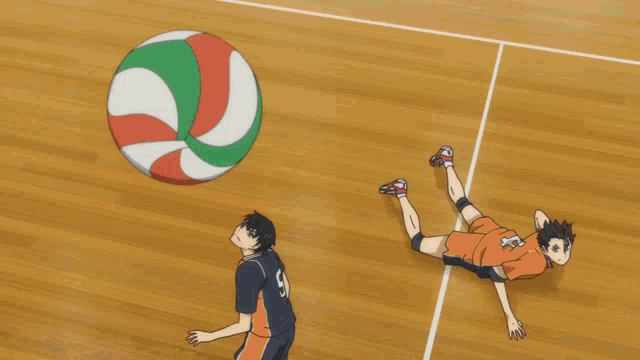BASIC FUNDAMENTALS
Various techniques are used to propel the ball in different game situations. In all of them the ball must be hit, not caught or thrown.
Serve
Each point begins with a throw-in from behind the baseline. The ball is thrown into the air and hit towards the opposite field looking for the weak points of the opponent's reception. It can be done standing or jumping. The orientation of the serve is important because the opposing player, who is forced to receive the shot, is limited in participating in the next attack. To execute the gesture, the right back player must stand in the service area and wait for the referee's whistle to sound. The ball must be dropped or thrown into the air.
A player making a jump jump for the serve or serve. The jump allows the hit to be made higher and therefore makes it easier to cross the net and hit harder.
Reception
Reception is intercepting and controlling the ball coming from the opposing team's serve.
It is the team's first hit to build their attack when not in possession of the serve. The importance of receiving the serve lies in the fact that it is a necessary first step in building an effective attack, because if the reception is faulty, the ball will reach the setter badly (or not at all) and will not allow an effective attack to be built. Therefore, the objectives of the reception are to neutralize the opponent's serve and facilitate the construction of the own attack as much as possible, placing the ball in the best possible conditions.
The pass with the forearms, the usual one in the reception, is made by fully extending the elbows and performing an external rotation of the forearms so that the hit is made with the inside of the forearms. The area of the arms at the moment of contact with the ball requires that the hands are joined with the thumbs together, parallel and symmetrical.
Placement
Normally the second touch is intended to provide a ball in optimal conditions so that with the third touch an auctioneer finally puts it into the opposite field. The set is done by raising the hands with a finger pass, the most accurate pass in volleyball. The setter has in his hand the responsibility of distributing the balls throughout the game, to the different spikers and through the different zones.
Attack-Finish
The player, jumping, finally sends the ball hard into the opponent's field looking for places that are poorly defended, or against the opposing players in conditions of speed or direction such that they cannot control it and the ball goes out.
The player can also choose to cheat or feint, leaving a soft ball at the end that is not expected by the opponent.
Block
This action aimed at intercepting any attack by the opposing team, jumping next to the net with raised arms seeking to return the ball directly to the opposing field, or failing that, narrow the field of attack to induce it to throw the ball out of the field of play. . Blocking can involve up to three players (all three forwards) to increase interception chances. Also important here will be the help of the second row to recover the ball in the event of a failed block.









No hay comentarios:
Publicar un comentario